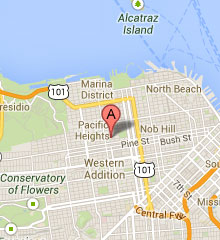Even though breastfeeding is the most natural feeding process, mothers are often faced with both a number of challenges arising from it and misconceptions about it. For National Breastfeeding Month, which occurs every August, we’re going over some interesting and helpful facts about breastfeeding.
Health Benefits of Breastfeeding
Studies show that breastfeeding provides many short- and long-term health benefits for both mother and child. For babies, these health benefits include:
- Increased immunity against bacteria and viruses
- Reduced risk of sudden infant death syndrome (SIDS)
- Lowered risk of obesity, diabetes, asthma, and infections
For moms, health benefits include:
- Reduced risk of developing high blood pressure, type 2 diabetes, ovarian cancer, and breast cancer
- Reduced risk of depression
- Improved uterine recovery
Breastfeeding Challenges
Although breastfeeding offers myriad benefits, it’s not always a simple and straightforward process. Nursing moms face a wide range of challenges while breastfeeding. Among the most common challenges are the following:
- Sore nipples
- Low or excessive supply of milk
- Engorged breasts
- Plugged milk ducts
- Nursing strikes, when the baby suddenly refuses to breastfeed
- Problems with latching
- Exhaustion
- Nipple shape and size
- Difficult emotions, such as depression or stress
New moms often put a lot of pressure on themselves and may unfairly give themselves a hard time when faced with these challenges. However, all these obstacles are very normal experiences and can be overcome with a little help and support. If you’re having difficulties with breastfeeding, talk to your OB/GYN or a lactation consultant, or you can even call the Office on Women’s Health (OWH) helpline. While OWH can’t offer you medical advice, they can provide you with resources and give you guidance on how to approach the issue.
Inability to Breastfeed
Sometimes, breastfeeding obstacles can be so significant that they impede your ability to breastfeed at all. While it’s disappointing or saddening for many women not to be able to nurse, you can still feed and bond with your baby in other ways. One common solution is to pump your own breast milk while supplementing with formula and feed your baby with a bottle. Again, be sure to talk to your doctor about the best way to do this.
As for bonding with your baby while bottle-feeding, it’s actually pretty simple. Do things like:
- Cradling your baby close during feeding
- Making eye contact throughout the process
- Singing or talking to your baby
- Touching your baby
These simple, natural activities help create a connection whether you’re breastfeeding or using a bottle.
Learn More About Breastfeeding
If you’re interested in learning more about breastfeeding facts, strategies, and tips, or are having a problem nursing, contact Pacific Gynecology and Obstetrics Medical Group today.


